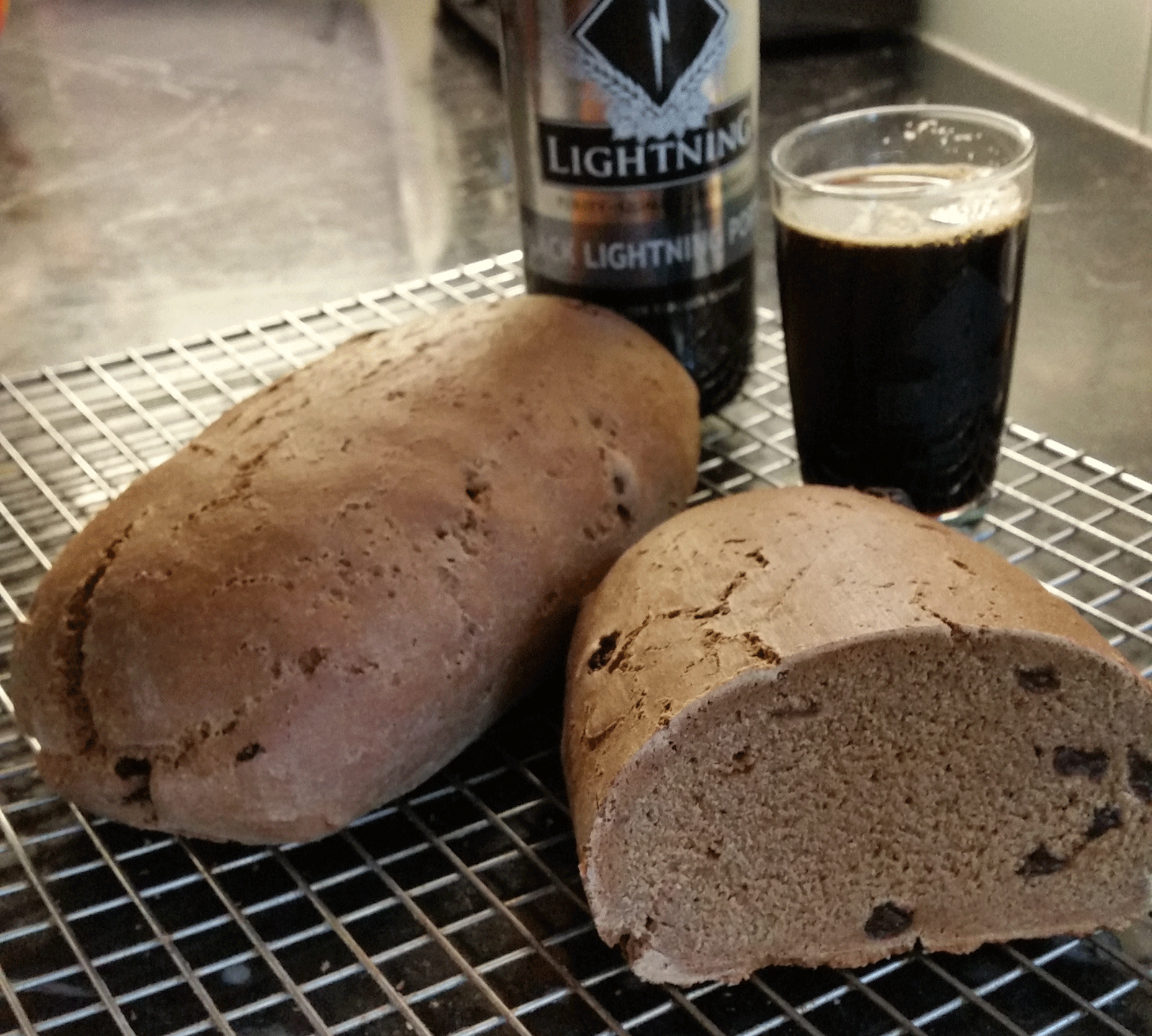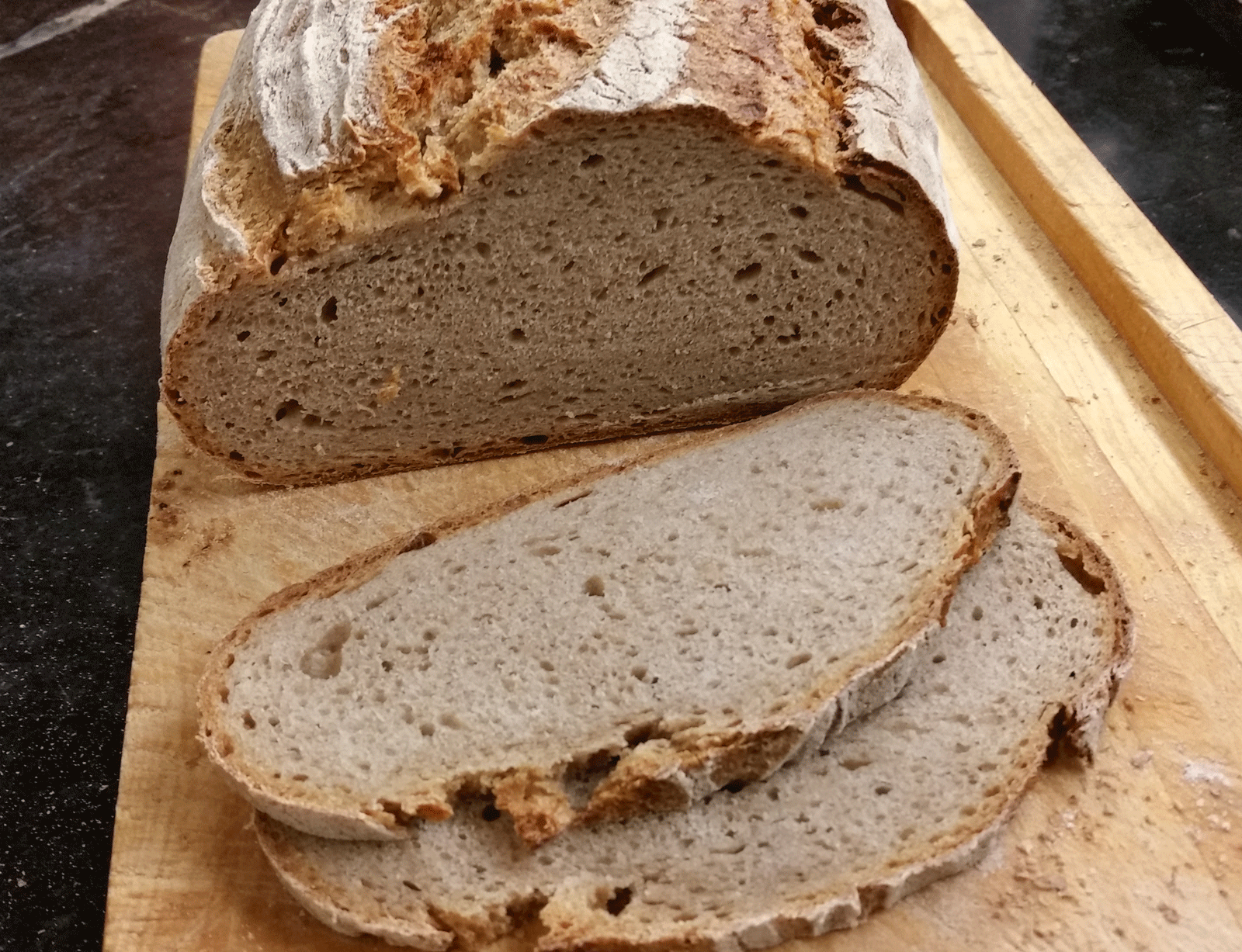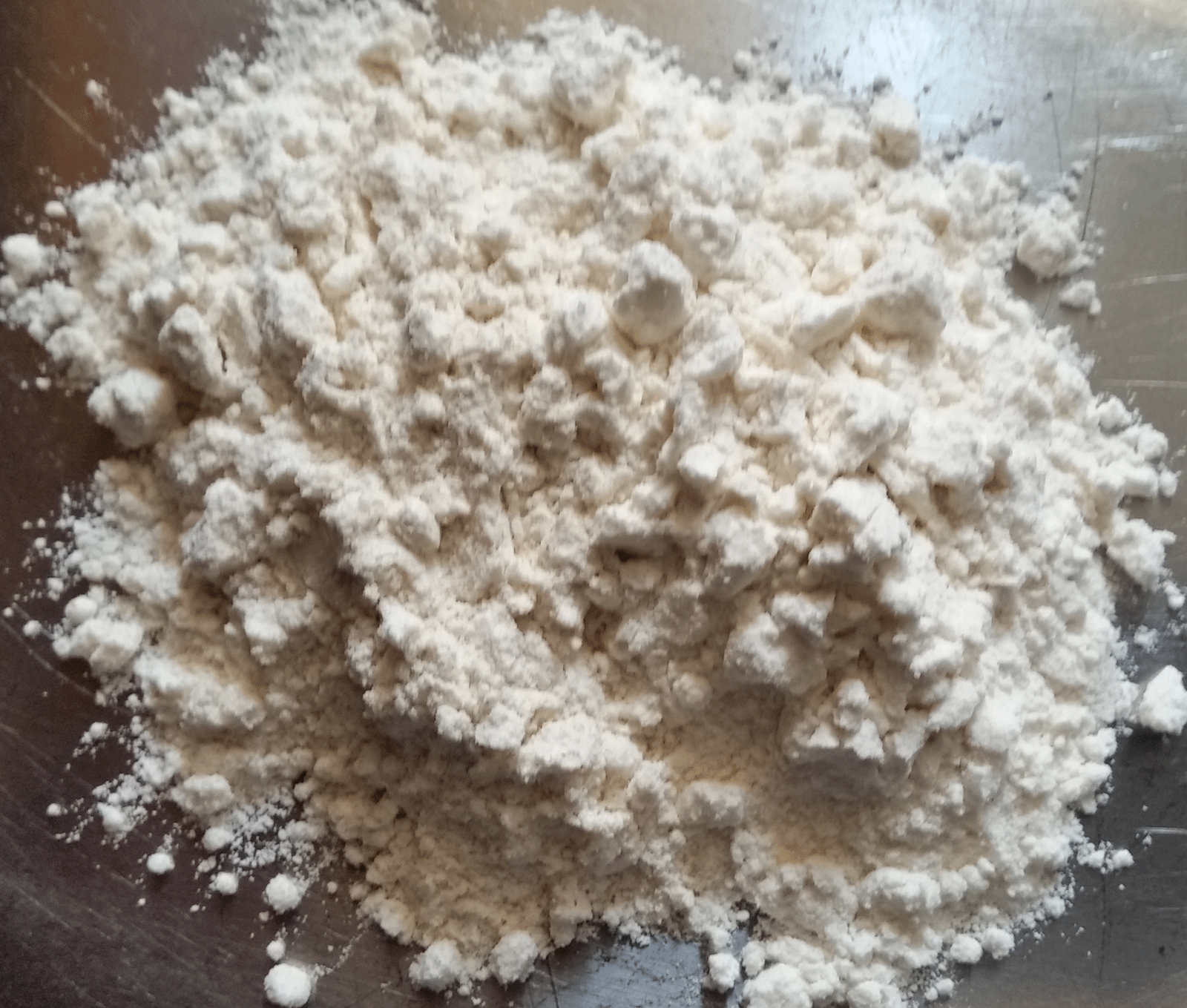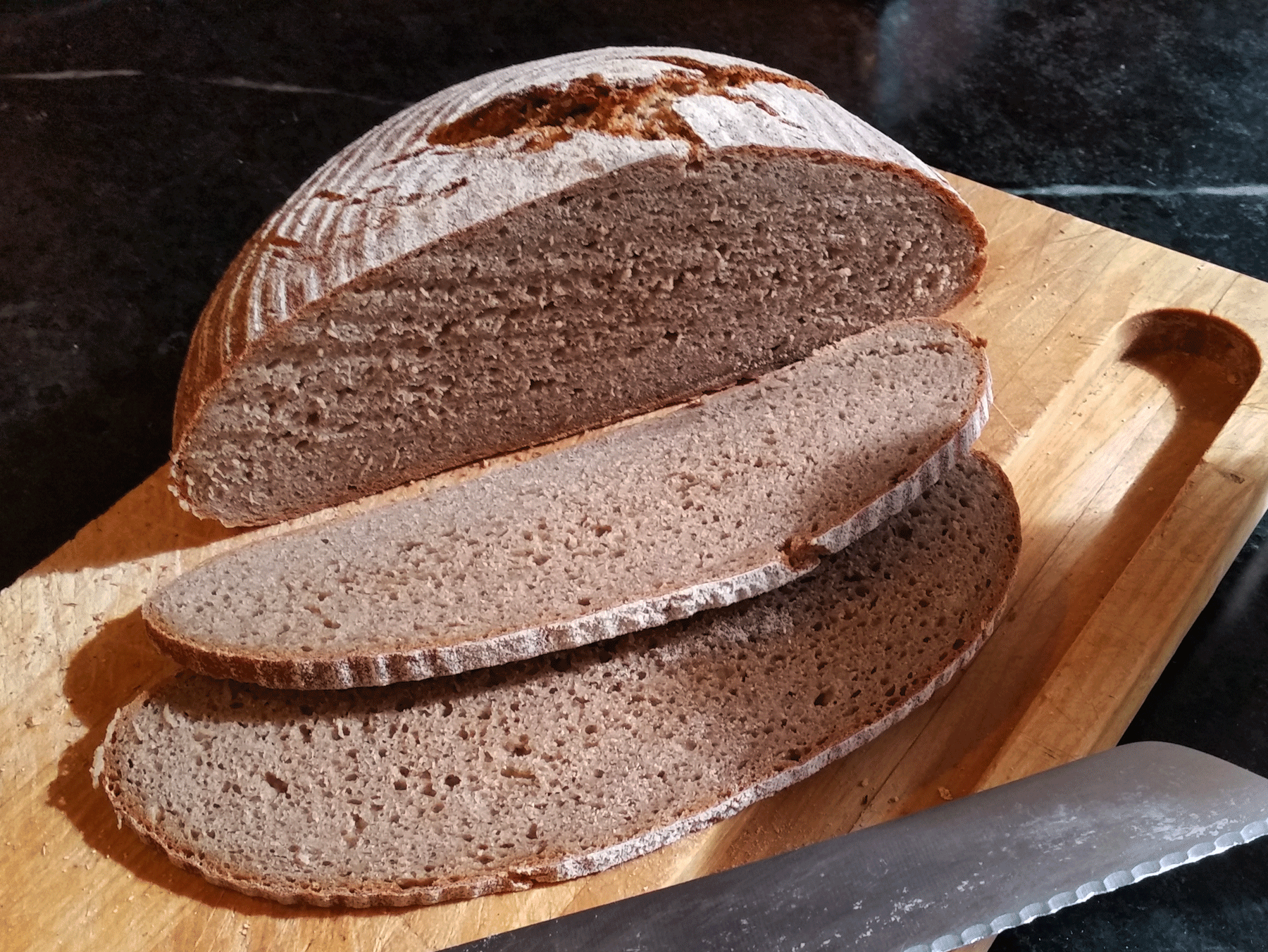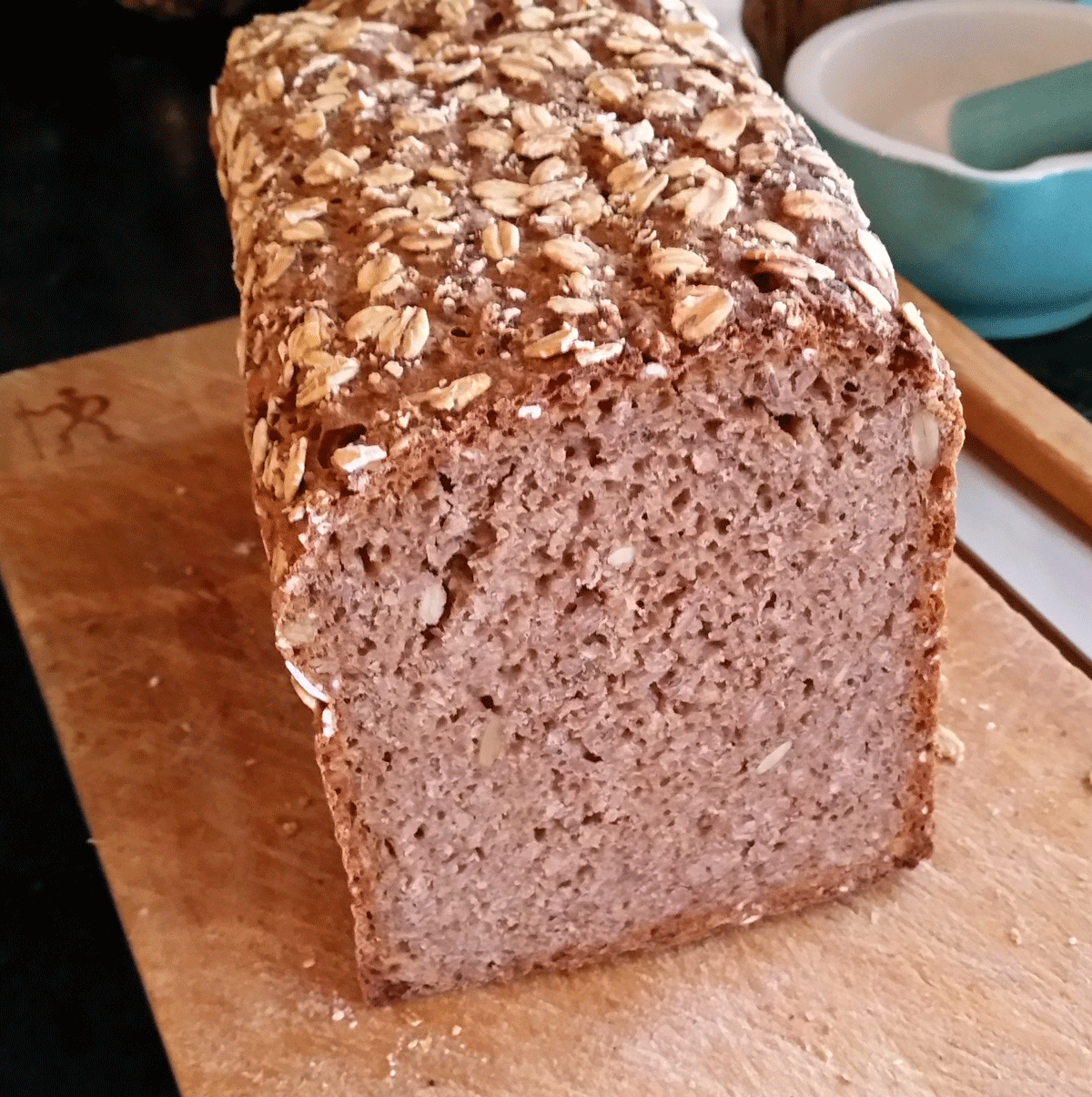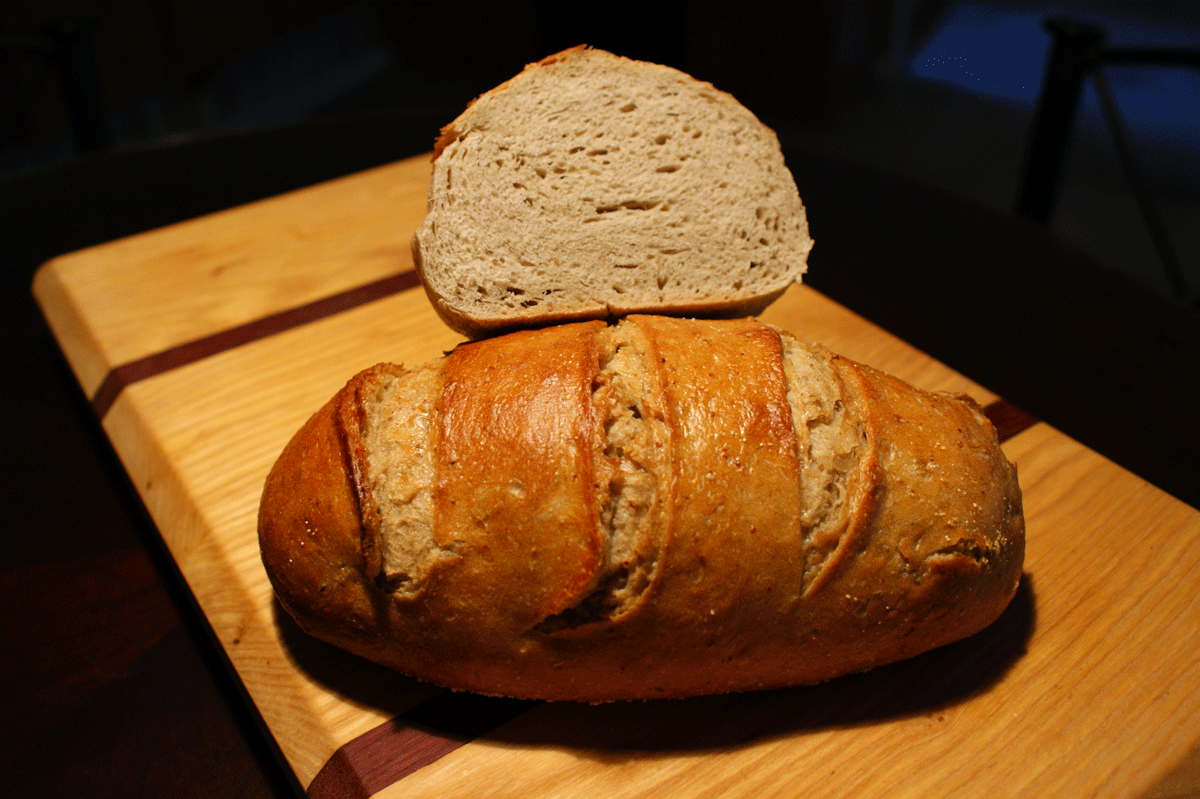| Rye %: | 100% |
| Stages: | Sponge, scald, yeasted scald-sponge (opara), final dough |
| Leaven: | Rye sour culture, yeast |
| Start to Finish: | 12-13 hours |
| Hands-on Time: | 40-45 minutes |
| Yield: | One 1¾ lb./800g loaf |
I love Russian rye breads for the intensity and complexity of their flavor profile, and this one is certainly among the best of breed.
Like so many classic Russian ryes, Moskovskiy starts out with a sponge and a scald that incorporates not only rye but also red rye malt and caraway. The sponge is hydrated to only 70% and it ripens at 85°F/30°C, which favors acetic acid production by the LAB. The scald matures for just 2 hours, which is sufficient to produce the chocolaty sweetness that’s characteristic of the red rye malt.


